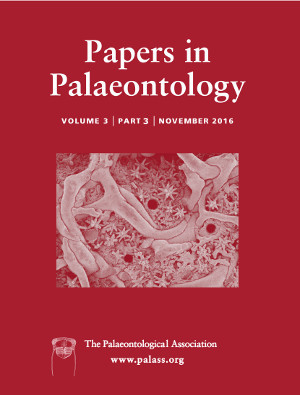Reg. Charity No. 1168330

The trace fossil Rosellichnus patagonicus preserved in palaeosols is a cluster of vertical bee cells with smooth inner surface and discrete walls. R. patagonicus was originally described from two fragmentary specimens which limited a morphological analysis, the correct interpretation of the producer and palaeoecological inferences. Abundant specimens of R. patagonicus recently collected from several Cenozoic localities of Patagonia, principally from the La Pava Formation at Paso del Sapo, have allowed the recognition of a complete set of morphological characters, among which the curved neck of some cells is particularly significant. Isolated cells in the same outcrops show similar curved necks. Such cells are constructed only by diphaglossinae bees, to which clusters and isolated cells may be attributed. These trace fossils are particularly comparable with extant cells and clusters of Cadeguala albopilosa (Diphaglossinae) which at present nests in forest clearings with grass cover. Accordingly, the andic mollisols from the Miocene La Pava Formation, where R. patagonicus is abundant, formed in warm‐temperate, sub‐humid and seasonal conditions, under grass‐dominated vegetation with subordinate tree coverage.